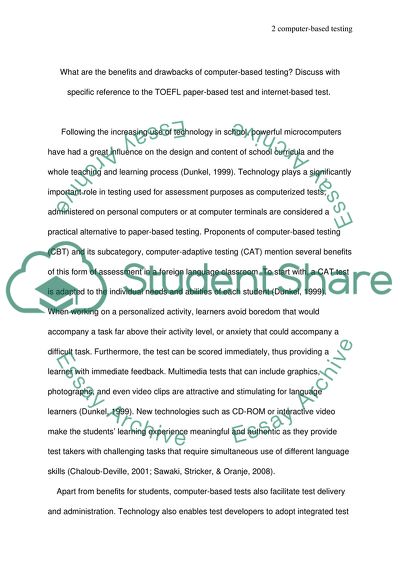Cite this document
(Benefits and Drawbacks of Computer-based Testing Assignment, n.d.)
Benefits and Drawbacks of Computer-based Testing Assignment. Retrieved from https://studentshare.org/education/1732079-what-are-the-benefits-and-drawbacks-of-computer-based-testing-discuss-with-specific-reference-to-the-toefl-paper-based-test-and-internet-based-test
Benefits and Drawbacks of Computer-based Testing Assignment. Retrieved from https://studentshare.org/education/1732079-what-are-the-benefits-and-drawbacks-of-computer-based-testing-discuss-with-specific-reference-to-the-toefl-paper-based-test-and-internet-based-test
(Benefits and Drawbacks of Computer-Based Testing Assignment)
Benefits and Drawbacks of Computer-Based Testing Assignment. https://studentshare.org/education/1732079-what-are-the-benefits-and-drawbacks-of-computer-based-testing-discuss-with-specific-reference-to-the-toefl-paper-based-test-and-internet-based-test.
Benefits and Drawbacks of Computer-Based Testing Assignment. https://studentshare.org/education/1732079-what-are-the-benefits-and-drawbacks-of-computer-based-testing-discuss-with-specific-reference-to-the-toefl-paper-based-test-and-internet-based-test.
“Benefits and Drawbacks of Computer-Based Testing Assignment”, n.d. https://studentshare.org/education/1732079-what-are-the-benefits-and-drawbacks-of-computer-based-testing-discuss-with-specific-reference-to-the-toefl-paper-based-test-and-internet-based-test.


